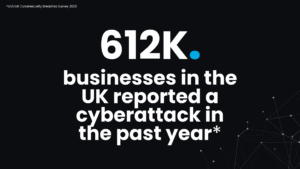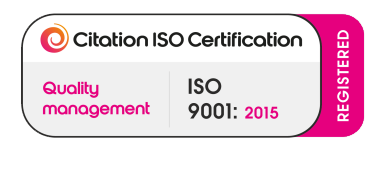From online transactions to cloud-based collaboration, digital tools have made it easier than ever to manage and grow a business. However, they have also increased exposure to risks such as cyberattacks, data loss, system downtime, and compliance violations. In fact, approximately 3 in 4 executives report that the frequency of IT failures is increasing each year.
Therefore, understanding the basics of IT is non-negotiable, especially for small businesses. By knowing the fundamentals, you can develop a solid IT strategy that strengthens security and supports long-term growth.
To help you get started, we’ll outline the seven fundamentals that small businesses need to know about IT. Let’s get into the details!
7 Key Things Small Businesses Need to Know About IT
Recent industry statistics reveal that 48% of companies experience tech-performance issues daily. This results in operational delays, substantial financial losses, and customer dissatisfaction. To prevent frequent downtime and IT challenges, small businesses need to be aware of these seven key aspects of IT.
1. Cybercrime Is Hitting Small Businesses Hard

According to the Cybersecurity Breaches Survey 2025, nearly 612,000 UK businesses reported a cyberattack in the past year. Attackers usually exploit weak passwords, outdated systems, and inadequate employee awareness. These vulnerabilities lead to data breaches that damage customer trust and tarnish the brand’s reputation.
This is why it’s important to invest in cybersecurity. Implementing multifactor authentication, regularly updating the security software, and investing in firewalls and antivirus software are essential first steps.
But it’s not a one-time task. Your IT team needs to constantly monitor, test, and strengthen defences to prevent future cyberattacks.
| PRO TIP: Research shows that 95% of data breaches are due to human error. Strengthen your security by enforcing strict access controls, using password managers, and most importantly, training your staff to recognise phishing attempts. Empower your team to stop cyber threats before they cause real damage. |
2. Most Companies Aren’t Prepared for Data Loss
Data loss is the most damaging consequence of cyberattacks, human errors, or faulty hardware. It can cause compliance issues, financial losses, operational downtime, and ultimately loss of customer trust and business failure.
The good news is that a reliable data backup can prevent these costly outcomes.
A strong backup and recovery plan ensures business continuity even during system failures and cyber incidents. The best approach is to follow the 3-2-1 rule for data backup and regularly test your recovery procedures.
According to the 3-2-1 rule, you need to have three copies of your data stored on two types of media and one off-site copy. Make sure you have a disaster recovery plan in place for dealing with unexpected data losses.
3. Non-Compliance Is Getting Expensive

With regulations such as the GDPR, the Data Protection Act 2018, and the Online Safety Act, small businesses must manage and protect sensitive information responsibly. By March 2025, GDPR fines had reached €5.65 billion, which highlights how costly non-compliance can be.
Small businesses struggle with compliance issues, such as a lack of awareness of regulatory changes and inadequate employee training. To address these challenges, companies should conduct regular compliance audits to ensure adherence to relevant regulations.
Design a compliance plan and implement clear data-handling policies and security measures. It’s also important to keep your employees in the loop. Conduct staff training sessions and regularly update them on regulatory changes and compliance guidelines.
4. Unmonitored Networks Invite Security Risks
Proactive network monitoring allows businesses to detect and resolve potential problems before they escalate. Network monitoring tools provide visibility into bandwidth use, hardware health, and unusual activity that may indicate a breach.
Technical experts can diagnose IT issues using these tools with little effort. They provide a visual map of your IT infrastructure and notify you exactly where the issue is located. You can monitor device traffic to detect any suspicious activities and easily track data trends.
5. Lack of Structure Hurts Team Productivity
Strategic IT project management is vital for teams working remotely or across multiple locations. IT-powered platforms such as Trello, Slack, and Asana help teams stay organised and maintain transparency.
Centralised dashboards make it easy to assign tasks, set deadlines, and track progress. This structured approach enhances accountability and ensures projects are completed efficiently and on schedule. It also enables managers to evaluate employee performance and identify individual strengths and areas for improvement.
6. Most Businesses Now Rely on the Cloud
Cloud technology enables companies to access data, enhance security, and collaborate from anywhere, eliminating the need for expensive equipment and software development. This is why more than 90% of organisations rely on cloud services for their data needs.
For small enterprises, cloud solutions offer flexibility, scalability, and significant cost reduction. They facilitate data recovery in case of a system failure. Just make sure you choose a provider with strong encryption and access control for maximum protection.
7. More Businesses Are Turning to MSPs
If these IT operations seem overwhelming for your small IT team or if you can’t afford an in-house IT department yet, managed IT service providers are the way to go. MSPs provide expert support, maintenance, and security for a small monthly cost.
According to industry reports, 68% of businesses around the world outsource part of their IT operations to MSPs. These providers deliver 24/7 monitoring, cybersecurity management, and system optimisation. With professionals handling the technical complexities, small business owners can focus their time and energy on scaling their operations.
Transform Your IT Infrastructure with Rejuvenate IT
Studies show that 60% of small businesses close within six months of a cyberattack. This highlights the importance of proactive IT management for small businesses. Understanding these seven key aspects of IT strengthens small companies and allows owners to leverage technology to protect and build their assets.
If you’re ready to take control of your IT infrastructure, it’s time to partner with experts who understand your business needs. Rejuvenate IT helps small businesses stay ahead of threats and improve operations through customised IT solutions.
Our skilled technicians handle everything, from updates and backups to cybersecurity, so you can focus on growing your business.
FAQs
What is an IT strategy for a small business?
An IT strategy for a small business is a structured plan that aligns technology with business goals. It encompasses cybersecurity, data management, cloud adoption, and IT support, aiming to enhance productivity and mitigate risks. A robust IT strategy helps small businesses control costs and stay competitive by ensuring their investment directly supports their growth.
How much should a small business invest in IT each year?
Small businesses usually invest 4% to 8% of their annual revenue on IT. However, this isn’t a fixed criteria. IT expenditure is variable and mainly depends on the business size and IT needs. Companies with greater reliance on technology or with strict compliance requirements may spend 10-20% of their revenue on IT.
What percentage of small businesses are using AI?
Surveys indicate that nearly 68% of small businesses utilise AI in their business operations. AI tools help automate customer service, analyse sales data, enhance marketing, and improve cybersecurity. In fact, 74% of businesses using AI report a significant increase in productivity, demonstrating that intelligent automation delivers measurable outcomes.












